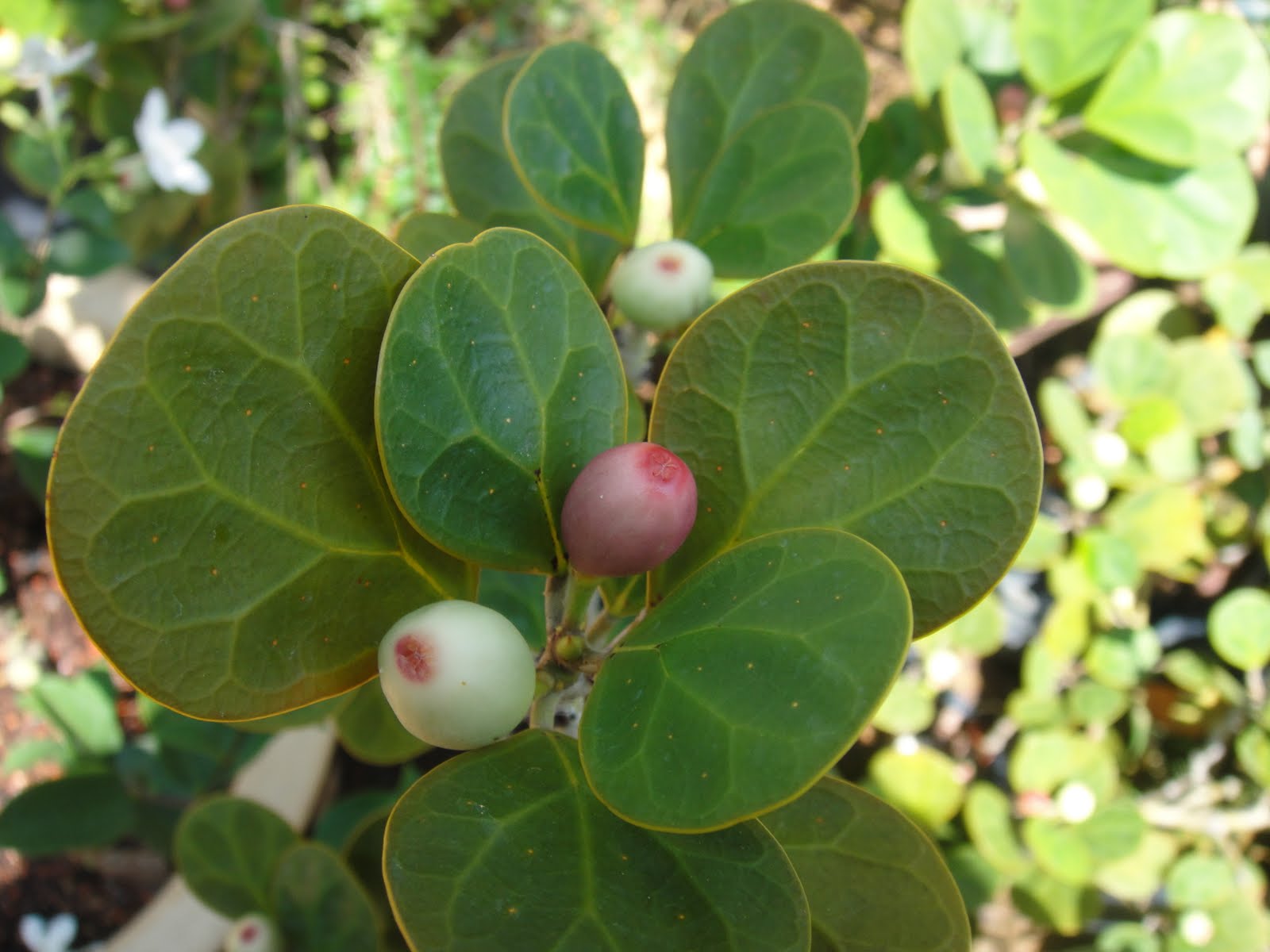
Mas cotek’s leaves and fruit
(Courtesy from http://www.majalahsains.com/mas-cotek-tumbuhan-herba-ajaib/)
Introduction
Mas Cotek is a herbaceous plant used in Malay medicine. The scientific name of this plant is ‘Ficus Deltoidea’, known as Sempit-sempit in the state of Sabah, Sarawak and Kalimantan Islands. It is also known as ‘agoluran’ by certain ethnic groups in Sabah.
Description
The name Mas Cotek is given based on the appearance of the plant as the upper surface of each leaf appears to be having fine yellowish or golden (translated to emas or mas in Malay) coloured spots. There are 2 types of Mas Cotek which comprises of male Mas Cotek (small leaf) and female Mas Cotek (large leaf).The difference of these two types of Mas Cotek is based on the shape of the leaves. Male Mas Cotek is small, narrow, thin and light as compared to the female one. The red spots can be also identified on the back of the leaf of male Mas Cotek.

Male Mas Cotek and Female Mas Cotek
(Courtesy from http://www.khasiatherba.com/herba/khasiat-mas-cotek.html)
Traditional Uses
Mas Cotek is traditionally used to shrink the uterus, return to normal position and strengthen it. In addition, it is used for healing and repairing the nervous system by drying the leaves 2-3 pieces (a mixture of male and female leaves) and boiled in three cups of water until it remains one cup. Apart from leaf and root extract decoction, the fruit is also edible (3-5 pieces per day) for general health. Among other diseases that are believed to benefit from Mas Cotek are as followed:
- Detoxification
- Improve blood circulation
- Gout
- Reducing cholesterol and fat
- Hemorrhoids
- Migraine / Headache
- Period pain
- Lower back pain
- Fatigue
- Sleep problems
- Stimulate the male hormone
- Knee pain
- Improves and smoothes the skin
Mas Cotek’s traditional uses are still under study. However, for the diseases mentioned above, its effectiveness has not been proven in clinical trials.
Side effects / interactions
Most studies indicate that the plant is safe to be used. However, excessive consumption of traditional medicines in the long term can disrupt the function of the liver and kidneys. Examples of commonly encountered side effects are skin allergies, kidney and liver function.
Advice to consumers
Due to the fact that the use of traditional medicine has gained a place in the hearts of consumers in Malaysia, the issue of safety, efficacy and quality of medicines should be emphasized. Consumers are advised to choose a traditional product that has been registered with the Ministry of Health with a valid registration number. Moreover, if there is any doubts, do consult a pharmacist or doctor if you want to take traditional medicine with modern medicine.
Patients suffering from chronic diseases are recommended to refer to hospitals and health professional because traditional medicines are just an alternative treatment. Consumers are also advised to consult a doctor immediately if experience severe allergic or persistent side effects when taking these traditional products.
In addition, consumers should be vigilant on the preparation of traditional medicines because the preparation process and storage may affect the safety, effectiveness and quality of the product. Excessive dose can also pose a danger to health. Therefore, consumers should seek advice from experts and accredited bodies such as National Pharmaceutical Regulatory Agency (NPRA) [formerly known as National Pharmaceutical Control Bureau (NPCB)] if you want to get the validity of information related traditional products.
References
- Khasiat Herba untuk Kesihatan (2014). Diambil pada Mac 3, 2016, dari http://www.khasiatherba.com/herba/khasiat-mas-cotek.html
- Diyanatul A.Z. (2016, Mac 10). Jamu Cina Alternatif Popular. Rencana Utama. Diambil dari http://www.kosmo.com.my/kosmo/content.asp?y=2015&dt=0210&pub=Kosmo&sec=Rencana_Utama&pg=ru_01.htm
- Chris C. O. & Jan L. M. (2000). Drug interactions due to cytochrome P450. Jurnal Proc (Bayl Univ Med Cent),v.13(4).
- Mazira M. G. (2010, 3 November). Perubatan dan Kesihatan. Mas Cotek : Tumbuhan Herba Ajaib. Majalah Sains.
| Last Reviewed | : | 08 September 2016 |
| Writer/Translator | : | Anis Hazwani bt. Abdullah |
| Accreditor | : | Mazli bt. Muhamad |







